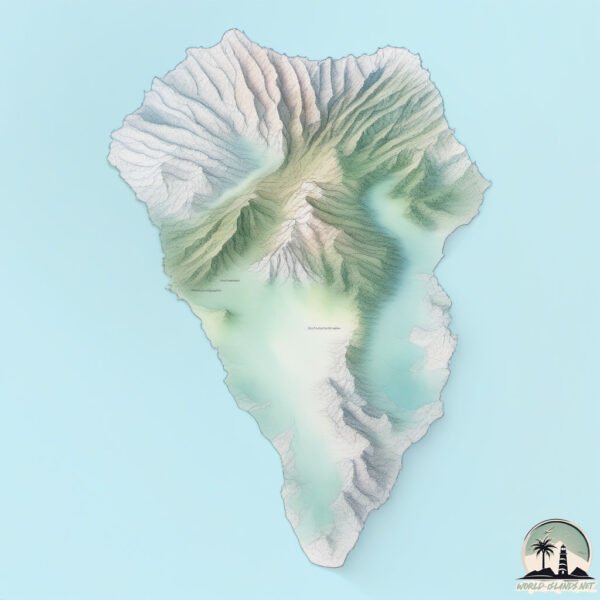Welcome to La Palma , a Temperate island in the North Atlantic Ocean, part of the majestic Atlantic Ocean. This guide offers a comprehensive overview of what makes La Palma unique – from its geography and climate to its population, infrastructure, and beyond. Dive into the details:
Geography and size of La Palma
Size: 707.8 km²Coastline: 155.6 kmOcean: Atlantic OceanSea: North Atlantic OceanContinent: Africa
La Palma is a Large Island spanning 708 km² with a coastline of 156 km.
Archipel: Canary Islands – A Spanish archipelago off the coast of northwestern Africa, known for their volcanic landscapes, unique ecosystems, and vibrant cultures.
Tectonic Plate: Africa – One of the world’s largest tectonic plates, covering the African continent and parts of the surrounding oceans, known for its stability with some active rift zones.
The geographic heart of the island is pinpointed at these coordinates:
Climate and weather of La Palma
Climate Zone: TemperateClimate Details: Warm-Summer Mediterranean ClimateTemperature: Warm Summer
Climate Characteristics: Characterized by warm, dry summers and mild, wet winters, typical of coastal areas with abundant sunshine Rain is more common in the winter months, maintaining a moderate climate.
Topography and nature of La Palma
Timezone: UTC±00:00Timezone places: Europe/LisbonMax. Elevation: 2423 m Roque de los MuchachosMean Elevation: 849 mVegetation: Evergreen Broadleaf ForestTree Coverage: 45%
The mean elevation is 849 m. Dominating the island’s landscape, the majestic “Roque de los Muchachos” rises as the highest peak, soaring to impressive heights. The island is characterized by Mountains: High, steeply elevated landforms. Characterized by both a high maximum elevation (over 500 meters) and a high mean elevation, creating rugged, mountainous terrains on islands.
Dominating Vegetation: Evergreen Broadleaf Forest
Vegetation: 13 vegetation zones – Exceptionally Diverse Island
Infrastructure and Travelling to La Palma
Does the island have a public airport? yes .
Does the island have a major port? no .
The mean population of La Palma is 141 per km². La Palma is Moderately Inhabited. The island belongs to Spain .
The name of the island resonates across different cultures and languages. Here is how it is known around the world: Arabic: لا بالما; German: La Palma; Spanish: La Palma; French: La Palma; Portuguese: La Palma; Russian: Пальма; Chinese: 拉帕爾馬島
Continuing your journey, Gomera is the next notable island, situated merely km away.
Discover La Palma : The Most Beautiful Island in the Canaries
In-depth guide of La Palma, one of the most beautiful Islands in Europe, La Palma in the Canary Islands is the must visit island for ...
Discover La Palma : The Most Beautiful Island in the Canaries
In-depth guide of La Palma, one of the most beautiful Islands in ...
In-depth guide of La Palma, one of the most beautiful Islands in Europe, La Palma in the Canary Islands is the must visit island for ...
Top 15 Must-See Places & Things to Do in La Palma | Canary Islands
The best things you can't miss when visiting the Island of La Palma in ...
The best things you can't miss when visiting the Island of La Palma in the Canary Islands. This list of 15 best locations is the ...
Megatsunami Scenario - La Palma Landslide
Subscribe –
http://goo.gl/wpc2Q1 A slide from this mountain could kill millions of people in Europe and along Northern America's ...
Spain is classified as Developed region: nonG7: Developed economies outside of the Group of Seven, characterized by high income and advanced economic structures. The level of income is High income: OECD.
News – Latest Updates and Headlines from La Palma
Stay informed with the most recent news and important headlines from La Palma. Here’s a roundup of the latest developments.
Loading...
Please note: The data used here has been primarily extracted from satellite readings. Deviations from exact values may occur, particularly regarding the height of elevations and population density. Land area and coastline measurements refer to average values at mean high tide.

